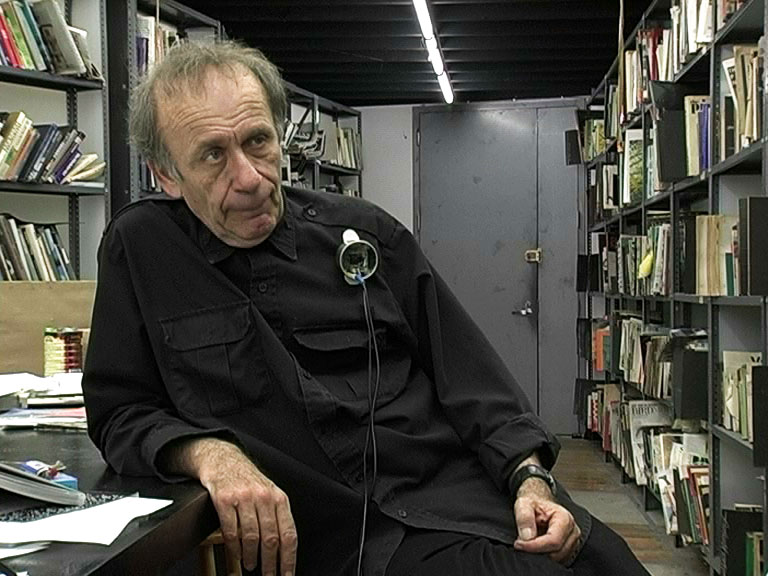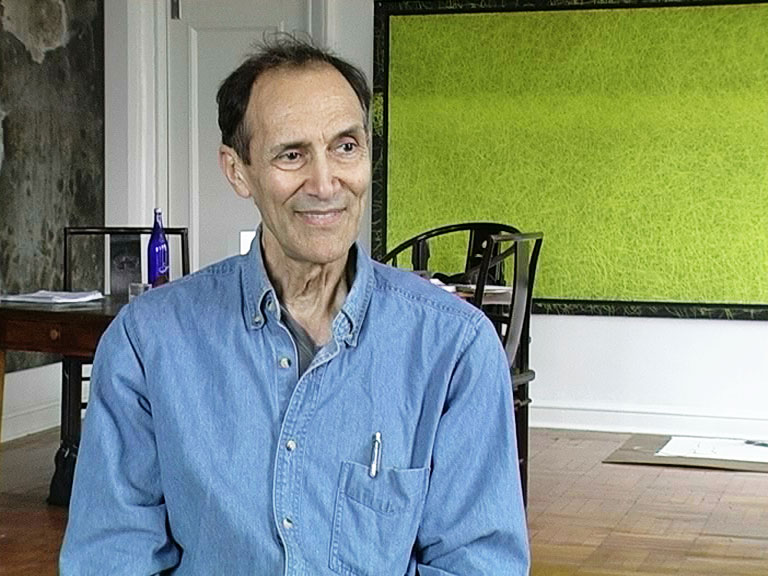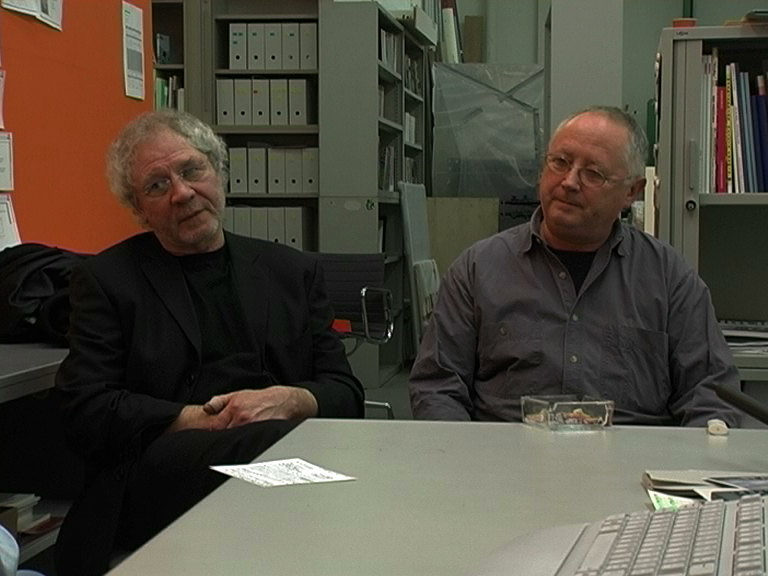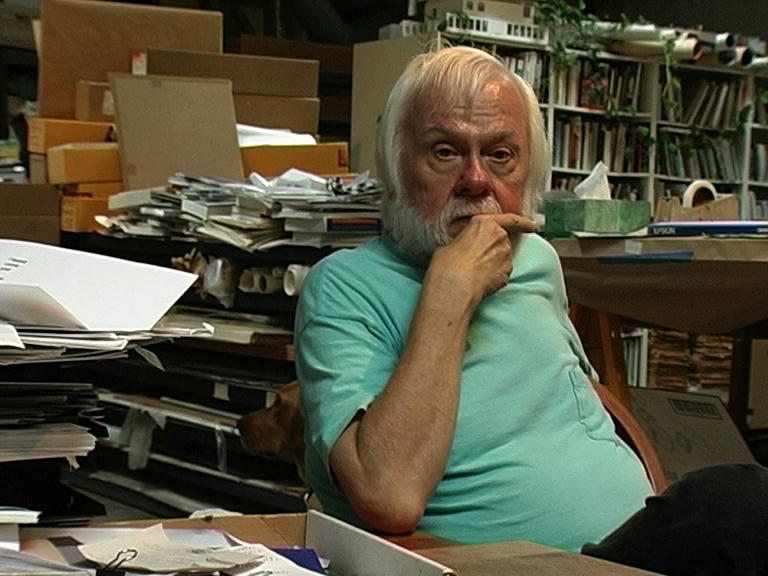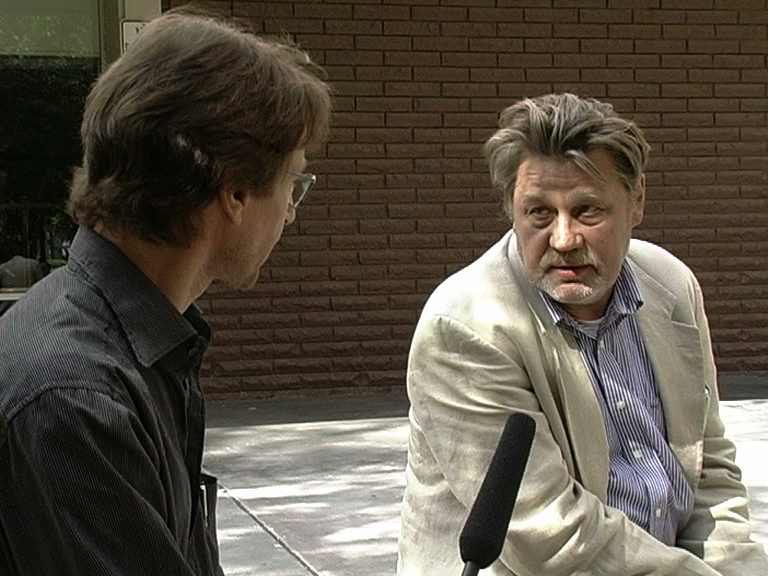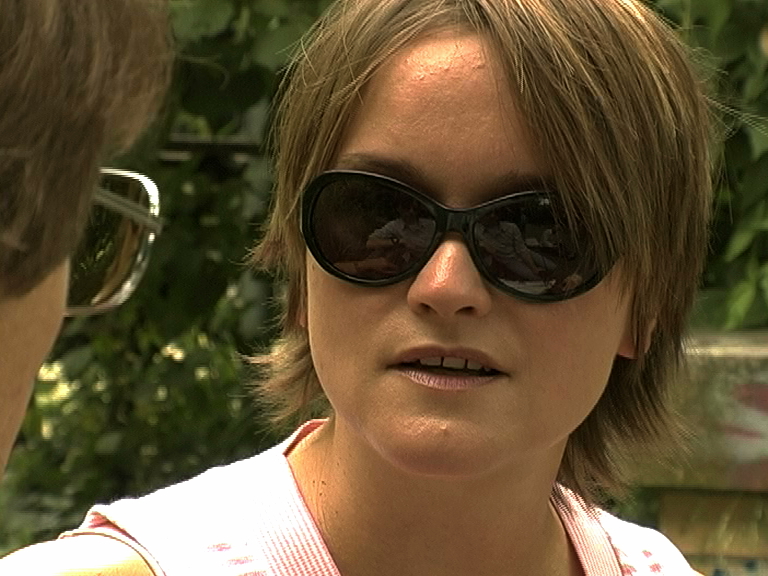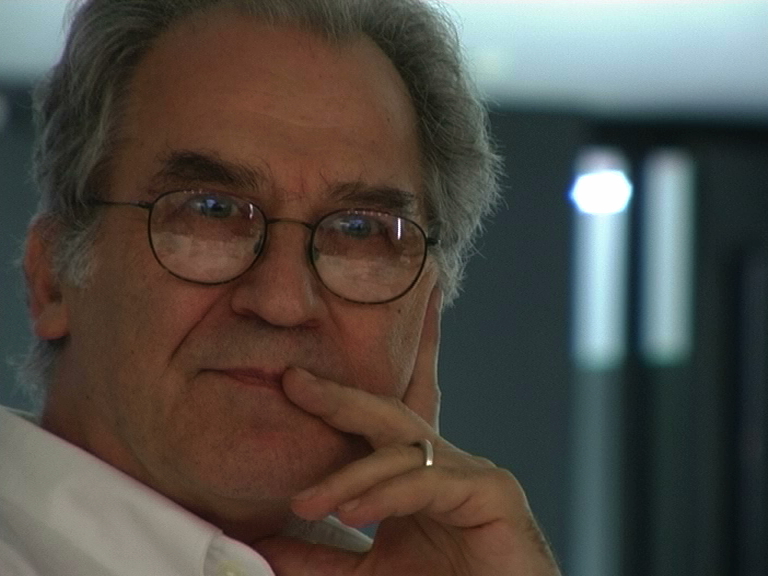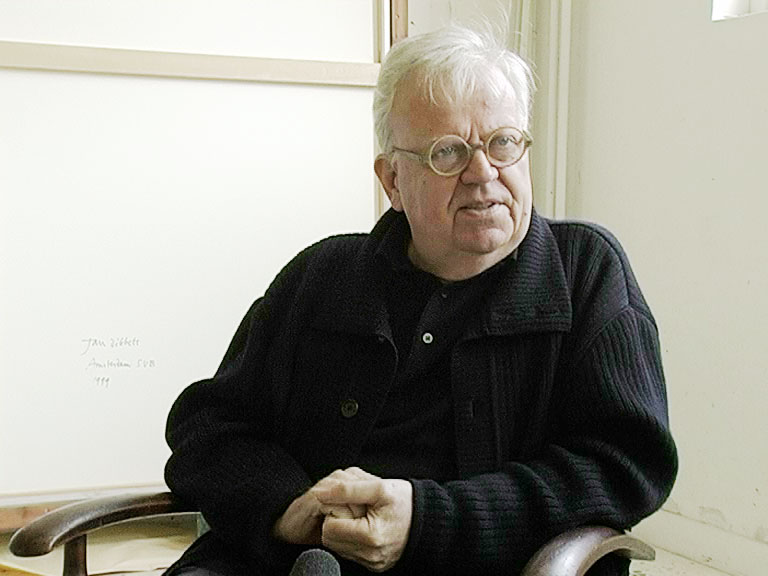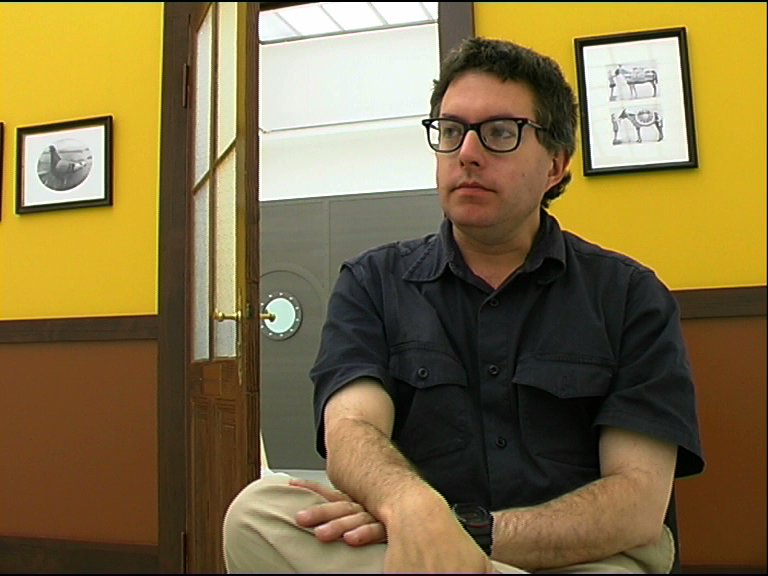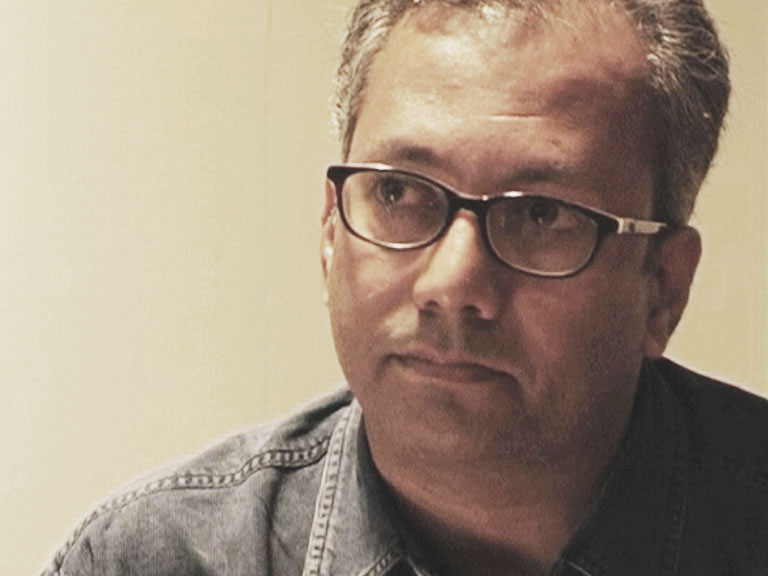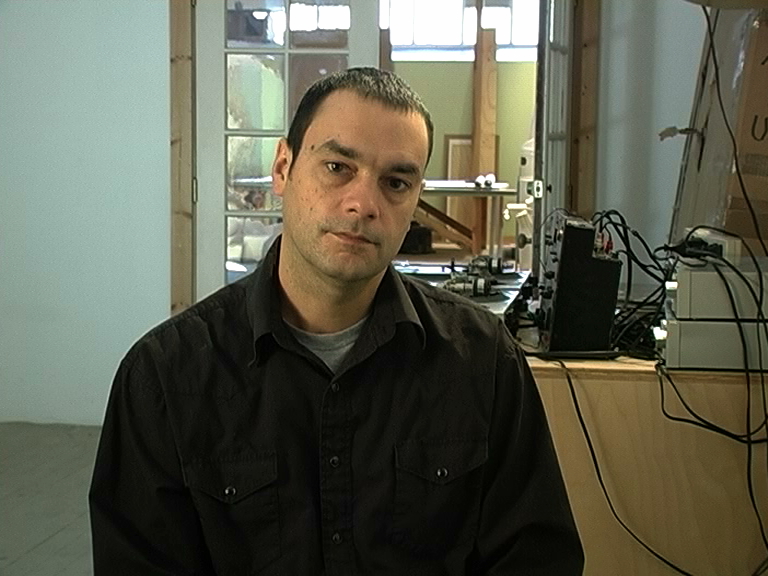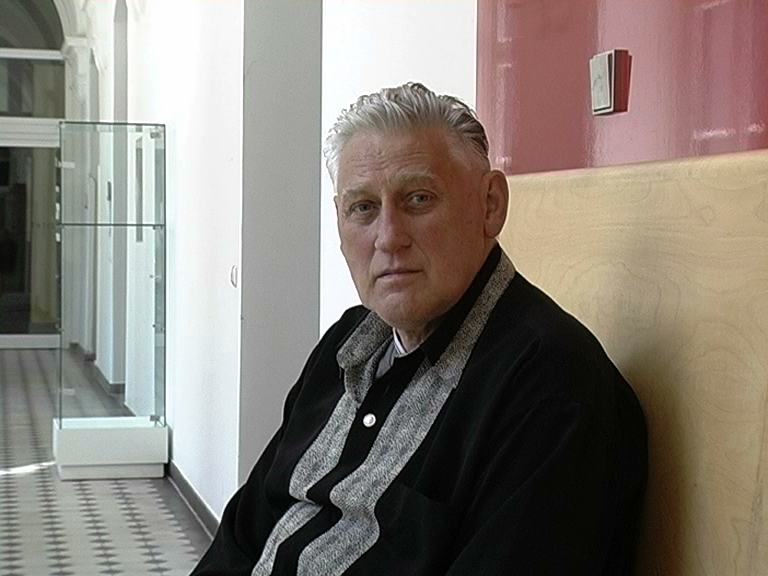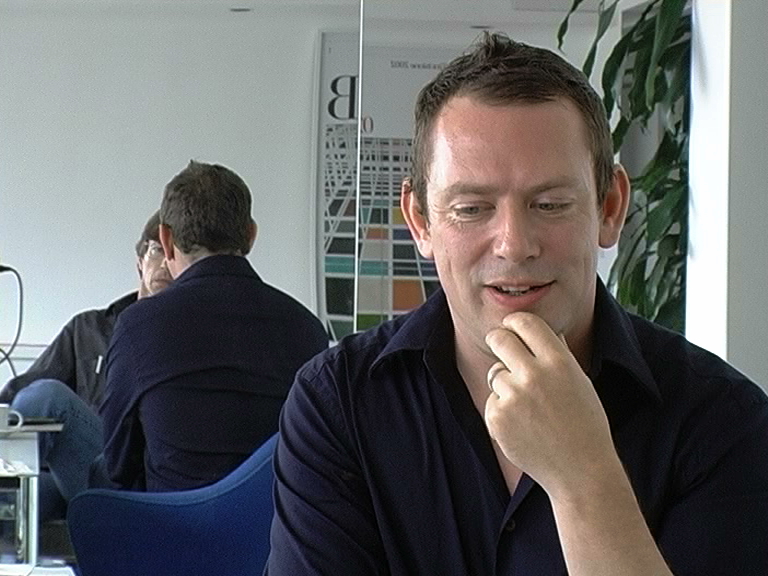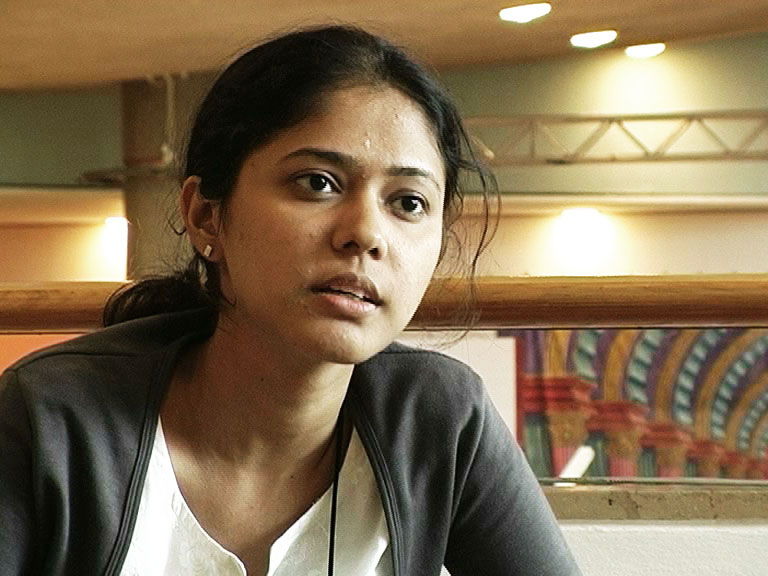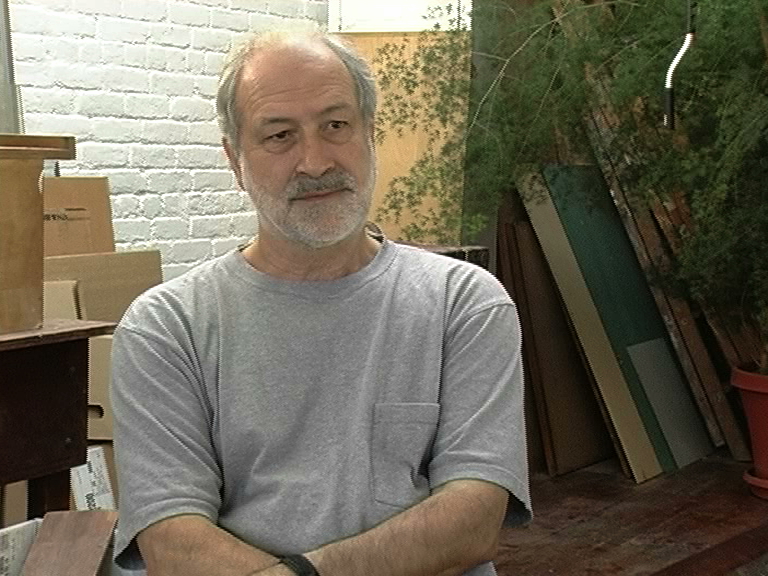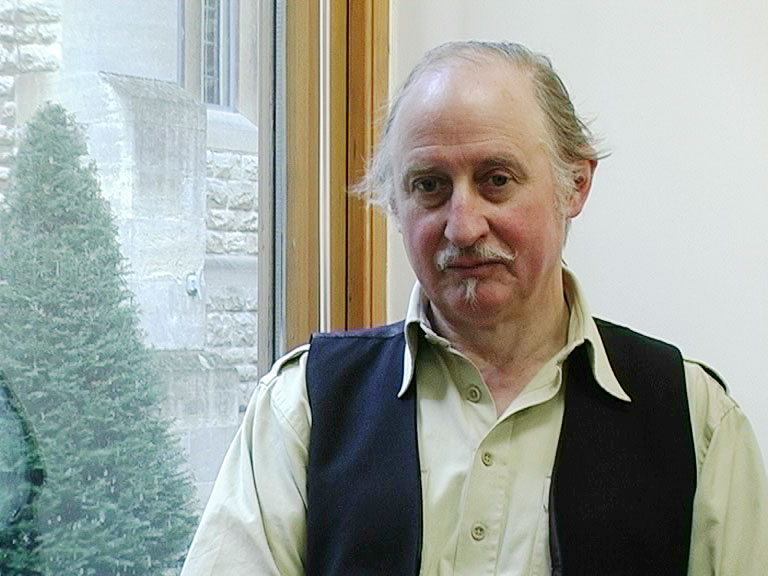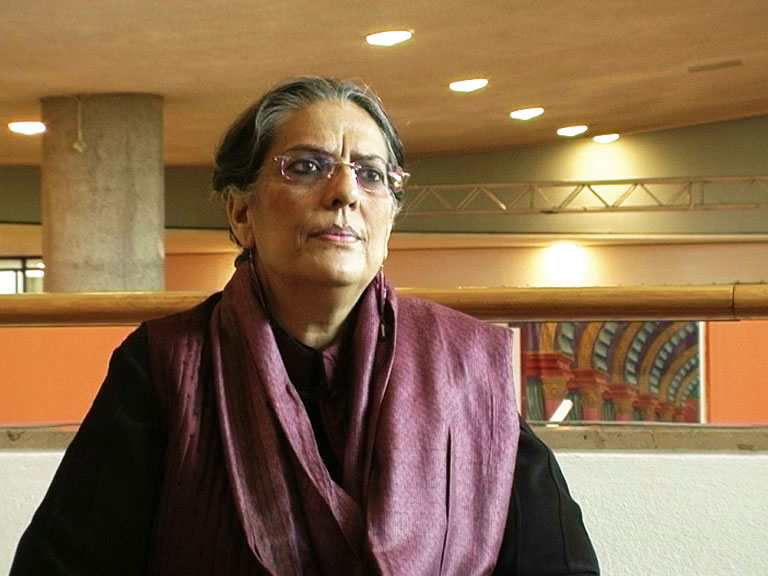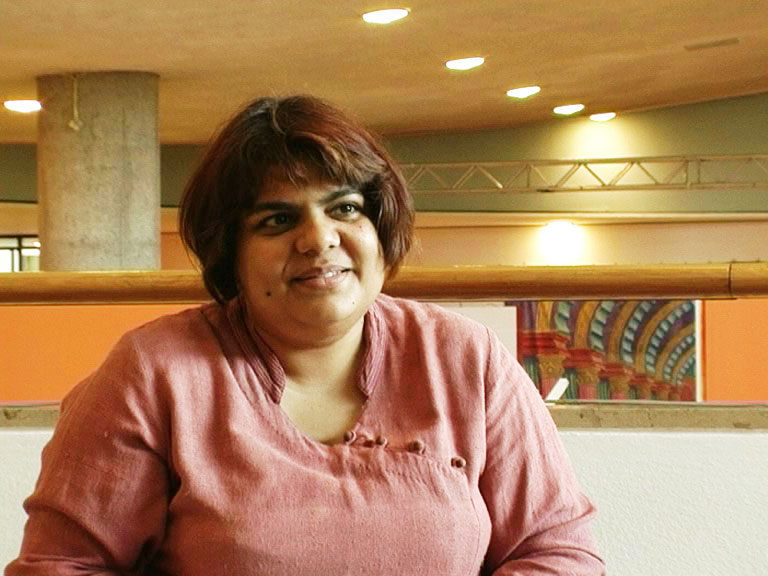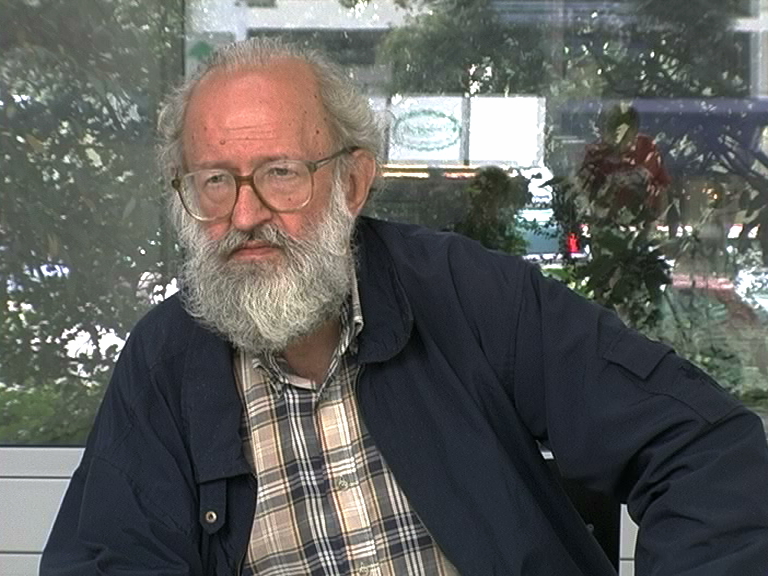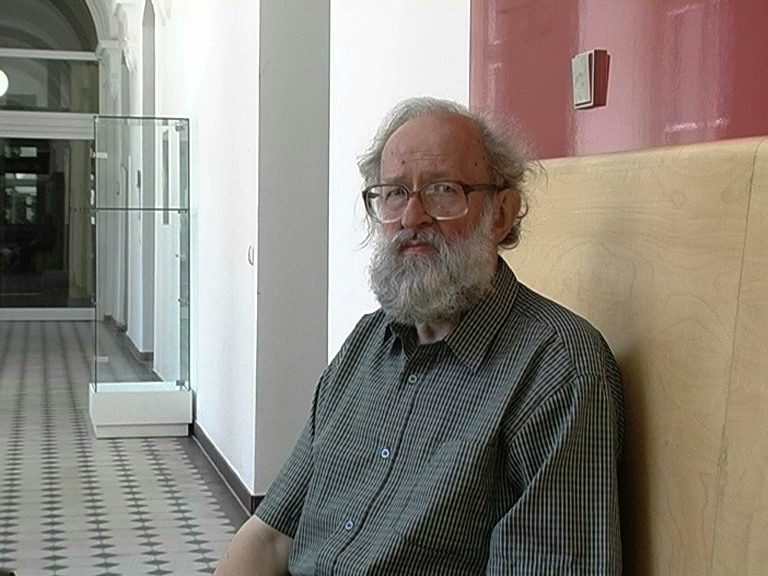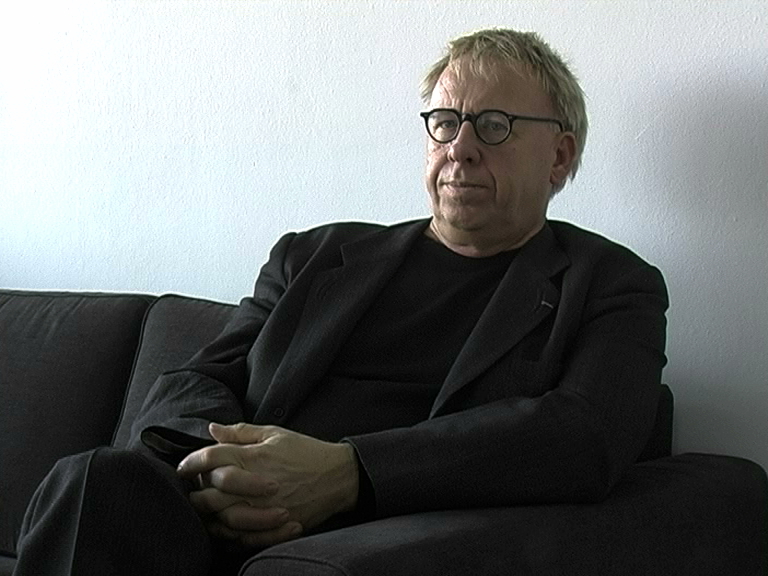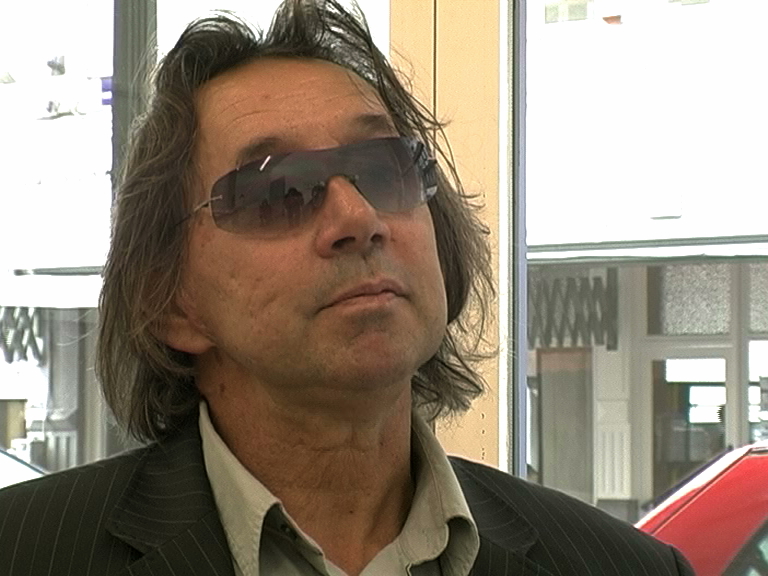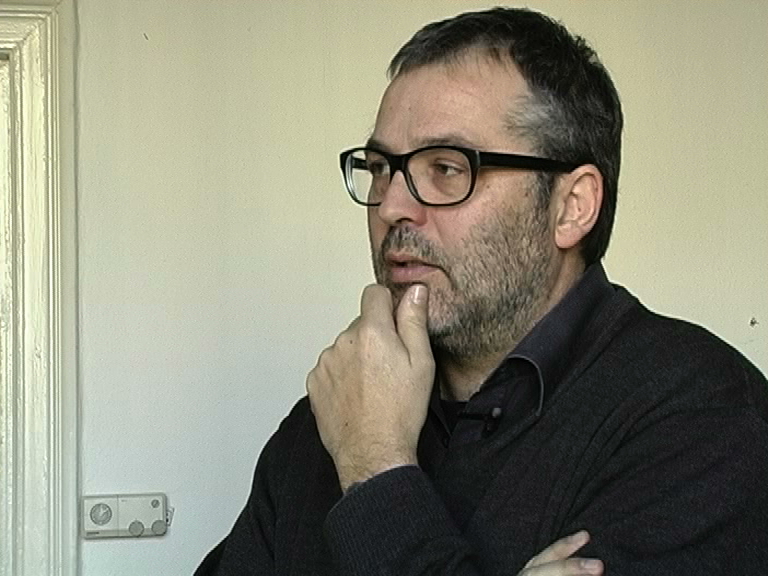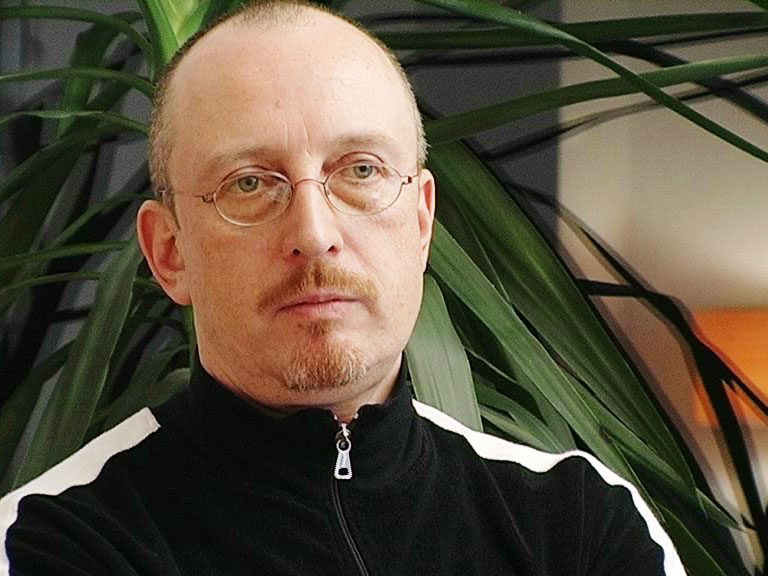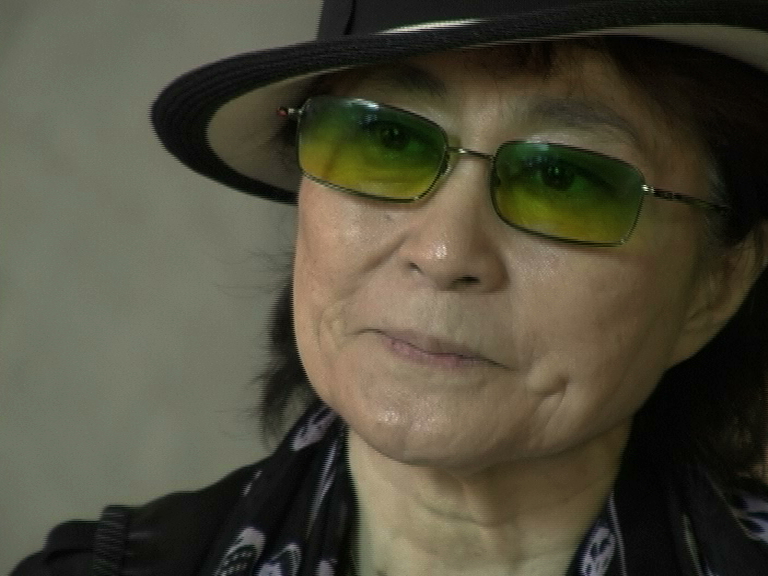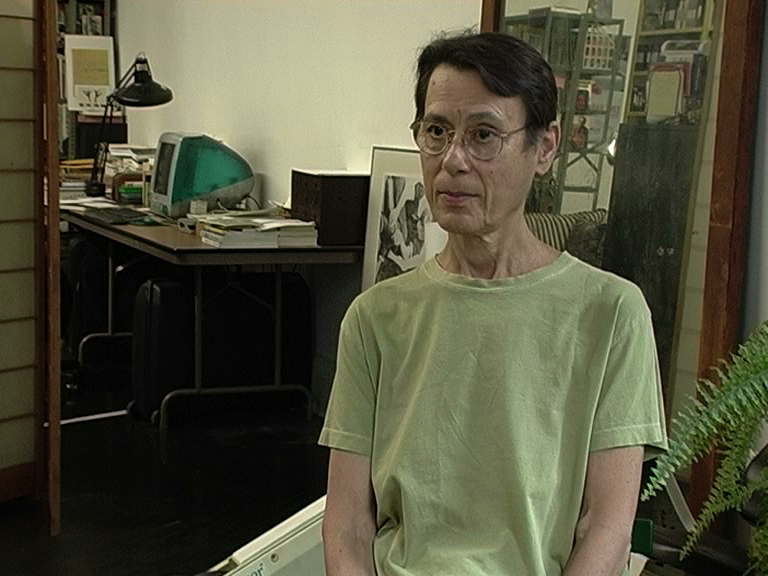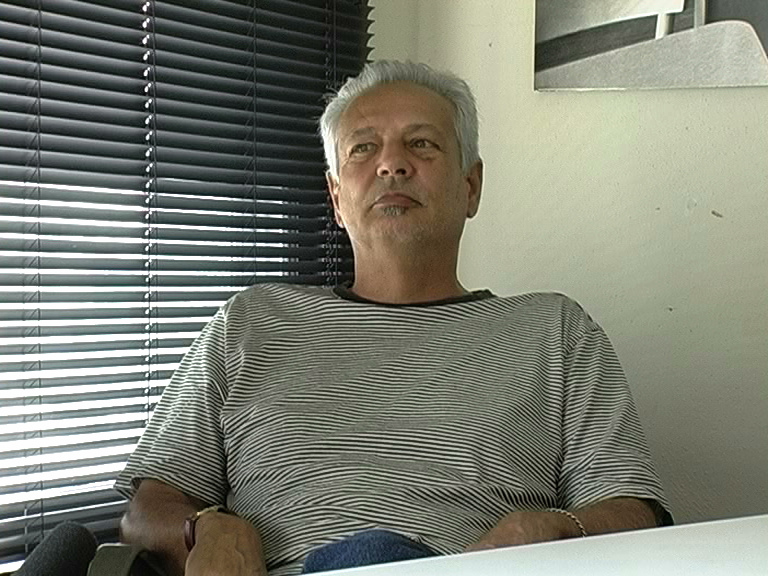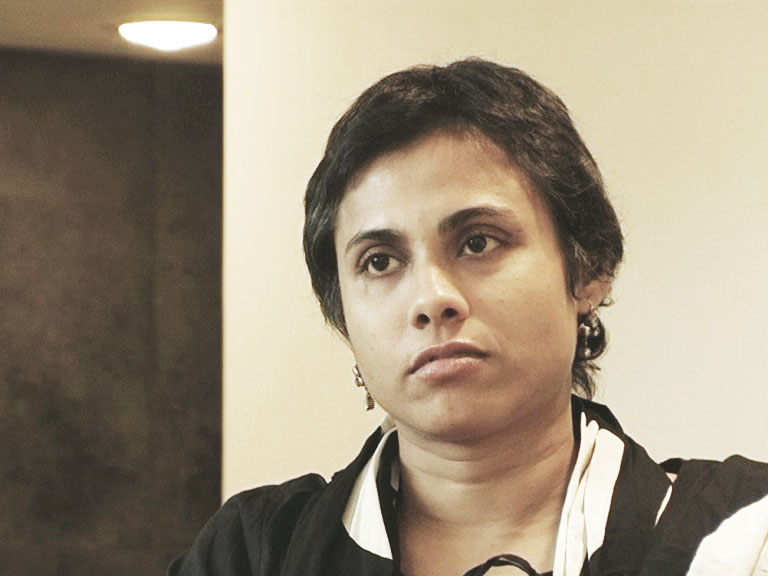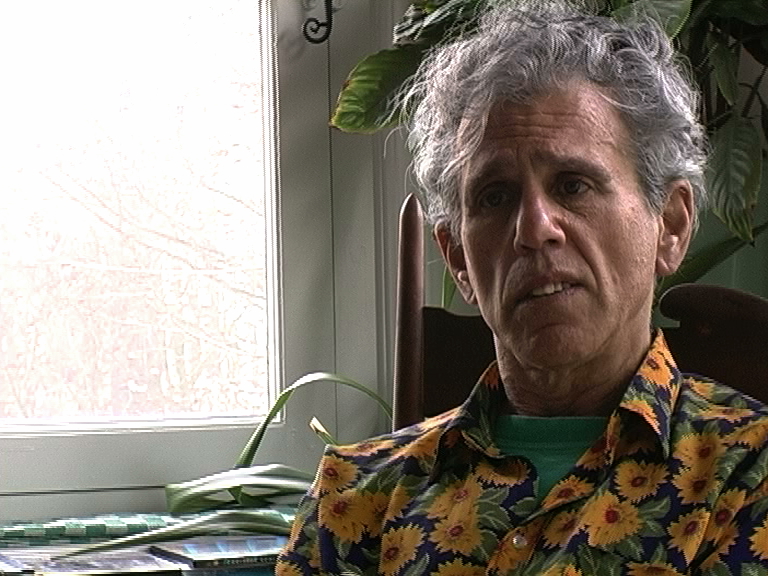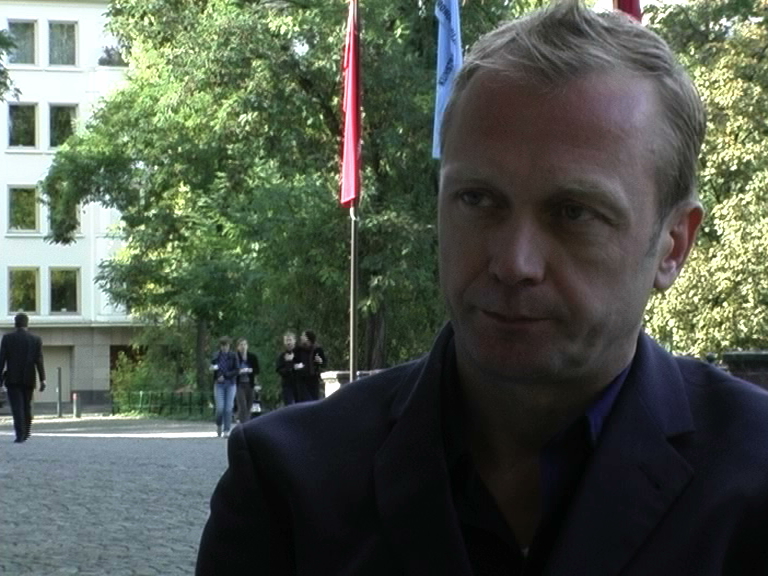S.R.: We are at Martha Rosler’s house on the 1st of October, 2004. Martha Rosler is well-known as a photographer and interventionist conceptual artist. Maybe you will tell us something more about that. For the entrance I want to come to the essay that has just recently been published in Artforum that you wrote. In that essay you are coming exactly to the points that are interesting to me. I’m just quoting one sentence and maybe then we can take this as a starting point for our discussion: “In the present context, the political work of the late 60s through 70s – now purged of exigency and brought out of the closet by the market – may be evaluated differently. This work may be tinged with nostalgia to young artists likely to have encountered it in art-history classes, but it offers a starting point and a history to connect with, an ur-moment that all trends in art like to locate. What initially seemed attractive for its look becomes more compelling for its commitment.” This sentence for me brings a lot of issues. And in the next sentence you are coming to conceptual and other post-forms of art. Maybe we can use this as a starting point for our discussion on Conceptual art. Do you consider yourself as first generation or second generation of Conceptual art? It’s just a question, it’s not so important for the…
M.R.: I don’t have any idea, I never thought about that. How about one and a half? (laughs)
S.R.: That sounds interesting.
M.R.: I Think, definitely the Kosuthian and Art & Language people who I actually knew started talking that way before I did. So even the idea of it was something that came to me and I wasn’t there in the planning councils and the early discussions. I would say, I was a post-pop artist. My critique of Pop was its paranoic insistence on naiveté and disconnection from any kind of conceptual critique. And I think, what I realized with Conceptual art was that there were other ways of being post-Pop that didn’t leave out a kind of intellectuality, critique, meta-critique and other ways of addressing art systems and language systems and social systems together. But I don’t know what the second generation is. Maybe that‘s second generation.
S.R.: I think all this dividing in generations is always a problematic thing //It’s funny//, because it’s putting something like a lineage and – right – an origin and an outcome and a goal. So I think that’s problematic. But I just want to touch it because it’s interesting how the artists positioned themselves. Because I know, that in the first generation, so-called first generation, in New York there were big fights going on: who did what first and who.
M.R.: Those were the men. But they only started fighting, the fighting occured a little bit later before that nobody cared because in the beginning nobody was paying attention. But I don’t find any of that interesting in the least. I do know, that if I have to take a stand, it’s clear, that Art & Language itself saw Joseph Kosuth as something of a latecomer. And that doesn’t even address people from outside. And that’s all I say about it because it’s not interesting. And then I moved to California anyway.
S.R.: I wanted to ask you about this move to California. What does it mean for you? For us as a European outsider perspective, I have this cliché, maybe transported through Robert Smithson, that there is this big gap between the intellectual introverted East Coast human being and the more relaxed, filled with deadpan humor West Coast lifestyle.
M.R.: Except for the last part I would have to agree. I don’t know that they have either depth or humour. But I would say, that moving to California was a move to America from N.Y. Which is not quite America both geographically and in terms of its location off the coast of the Eastern Mainland, Eastern part of the mainland. And in terms of the culture of New York. Particularly then was extremely different from the culture of southern California, where I moved. I think, that moving to America was to be confronted full on with the values that had brought us so many unpleasant things like the Vietnam War. And to be confronted with forms of social value and anti-intellectuality that were not the norm; modes of address, personal relations that were built on a kind of a repressive impulse rather than a straightforward communicative one. If there could be such a thing. So for me it was an encounter with a country I always had kept at arm’s distance, the one to which I officially belonged.
S.R.: How long did you stay to live in California?
M.R: Well, except for a few periods back here, it was twelve years, it was a really long time.
S.R.: How do you see the two parts of America or the Non-America, New York, this time? Because you were travelling a lot through the world, through Europe, and other parts of the world. How is it for you? Because you have a different perspective on American society and the political behavior in the United States.
M.R.: Well I would say New York is still pretty disconnected from the culture of most of the United States, though there is a strong suburbanizing element here which goes along with a kind of negative social values and Republicanism. And it’s fuelled by the usual cities’, countries’, now suburban split between respect for difference and intellectuality and instead a suburban desire for homogeneity and conformity and getting along, which is the same thing I said about my first encounter with the West Coast.
S.R.: Why I’m asking this question is, because your practice of art for me always contained a specific perspective on daily life. And in the way, you take daily life as the theme or the issue of your work, of your practice, puts you in a very specific position, maybe combined with a feminist background, puts you in a very specific position in that field that can be called “conceptual”. How do you see the development to that practice, your own development?
M.R.: Of daily life?
S.R.: Yes, the daily life thing, the feminist thing in relation to the field of so-called Conceptual art? I mean, let me say one more thing: There were some voices in Conceptual art who were working were very strongly for a much more autonomous, as you say in your last, recent essay, Kantian //exactly, absolutely// understanding of art.
M.R.: Absolutely. That was precisely that element of Conceptual art that most alienated me, it was the art as idea or art simply as meta-discourse. Because it seemed to me, that it literally was elitist in that it was such a highly restricted attention to an aesthetic legacy that it bore no fruit for me in terms of the idea of a more traditional avant-garde approach to opening art to the concerns of ordinary people, including ourselves, and to the questions of life, existence and sociality in general. I was not interested in logical operations. Now I understand that many people who were interested in these logical operations were interested in them because they thought, that that was a good vantage point from which to combat the repressiveness of society, but it seemed to me a bit recherché.
S.R.: For me from the German perspective it’s interesting how younger artists for example, Gregg Bordowitz, who I also talked to, is always pointing out that for him it was very important to have these two different sources: One is that of the very intellectual, logical procession, like Joseph Kosuth. //His teacher.// I think he was assistant at Kosuth’s. But the other point he is also referring to, is your practice.
M.R.: Yes, he had a father and a mother.
S.R.: Do you think that it’s simple like this?
M.R.: Yeah. I’m speaking symbolically in that sense, that I don’t think that the, I am speaking in terms of figures rather than us specifically. I’m perfectly capable of intellectual and conceptual analysis and I’m sure that Joseph is perfectly capable of thinking about daily life. But it is interesting how we broke down in Gregg’s life in terms of being a teacher of one thing and the teacher of another thing. I was also Gregg’s teacher though not to the same degree. It is true that at that moment in which feminism appeared I opted for the feminine. That is for the concerns of women. But I was just noticing somebody wrote in a little biography of me that I’ve been “she”, I have always been concerned with questions of geopolitics and space, but the feminist concerns seem confined to a particular era, and I haven’t thought about that yet in terms of whether, I mean, I don’t think of that is that true or not. But I would say, that if nothing else, the feminist concerns were my way of addressing the immediate exigencies of the politics of life in America. Particularly because we were engaging in an unjust war. It seemed to me that, I had been an abstract painter, and it seemed to me, that if I was leaving abstract painting behind, which was a decision I made. It was not to engage in language games, even though I was studying linguistics. I literally was getting a master’s degree in linguistics at New York University and therefore I was extremely interested in language operations and also in Wittgenstein and so on, though not that much. But it seemed to me all of this was a bit like still being back, looking at texts and trying to figure out: what is the real meaning of this text, and this kind of scholasticism just seemed completely bloodless. So, I don’t know. I think, if it wasn’t feminism it would have been a more directly political thing. Remember that my Vietnam War montages, although they were to some degree done with a feminist eye, were still anti-war montages, not authored by a female necessarily, though I would argue they were. But I leave the backdoor open for anybody to have done these, though they wouldn’t because they were about people’s houses. You get my meaning. We all live lives; it was women who insisted that the mode of operation within the field of the labour of production and reproduction of self and children and family, and the production of space in the domestic sphere, that was the concomitant to the production in the public sphere, that the two went together, and that these were necessary spaces of operation for artists. // Ehm. /// You look like this isn’t making sense?
S.R.: Yes, yes. It’s making a lot of sense for me. I’m just trying to push it a little further. How do you see the developments in the last ten years, fifteen years maybe? Because I was thinking a lot about that, and I wrote some essays. I have the feeling that the traditional or the formerly divided worlds, like the reproductive part and the productive part of the world – of course these are abstractions… But I have the feeling, that in the last fifteen years through the new media and through new modes of working – so we call it “deregulated life”, something like that, “deregulated work, labour” – that these two different worlds are much more fused, mixed and confused also, so that one of my thinking models, how I try to start to discuss it with my students, is always that I say: in the formerly divided worlds of labour we had maybe only two parts that were in the same way confused like it starts to be now for many people in different classes in the society and that were only the sector of prostitution and, in part, of art where the imagination, the unconscious said: what they are doing is in the same way production and reproduction. And then of course we have an image of it; in the new deregulated labour often you don’t have corporations, but you have something like a representation of the work. They are not really labourers for a corporation, they are maybe working at their home or working in totally different places but they get represented as the whole family working in this corporation for example.
M.R.: I agree with you. This is, I think, one of the reasons that people’s, our attention turned to this question of labour, production, reproduction was because it was hitting a crisis point at which it was about to become much less clear and much more interlaced so, yes, I think that, the change in the media universe has brought about exactly what you described, though I want to say there’s a little space there where I’d like to actually think a little more about, whether this is a trend or a condition. But it does seem this way now, and in fact one way to say it is that the division between public and private has been abrogated by the interpenetration of the commodity and of the mediated commodity into all of everyday life. Perhaps that’s where we can agree. But I do think, that in the mid 60s the incipient destruction of the private sphere was a dot on the horizon and not at all clear, and at the same time, the failure of all kinds of male practices to incorporate these softer elements needed to be addressed; it was unacceptable. If you remember, one of the critiques of feminism is that, in a way, it destroyed the family, but of course it’s the other way around: it’s the destruction of the family necessitated another round of feminist theorizing. And I say another, because of course in the early part of the 20th century, there had been one, and then in the mid 19th century. With every successive change in the conditions of production and reproduction within family and work, you see the rise of women thinking about the role of women and agitating about the way for women to gain and equalize their status as public citizens.
S.R.: Maybe I come again to your recent essay in Artforum, and I have the feeling that because you were also talking about these issues in relation to collaborative work and groups working with media, internet and so on, that in the first third of you text I read something I’m not sure if it’s right, something like an ironic undertone. I’m not sure if it’s right.
M.R.: What was ironic? Well, it begins and ends with an ironic remark about the way in which artists find themselves jumping on the barricades and saying: pay attention to me, pay attention to me. That’s the constant delusion on the part of artists that we can remake the world, if that’s what you are responding to, and of course it’s the market that has brought these practices to the fore once again, and we are always imagining that we are outrunning them, and of course we have to imagine that, because in a way we are. There’s always some degree of lag, and also these are symbolic operations. There always needs to be that avant-garde impulse, to be running outside the store, even if that’s only an appearance.
S.R.: How do you see your own practice, when I’m allowed to come to that point, because you started using the words “market” and “art market”. How do you see your own work in relation to that? Because I remember, when I first met you 1993, I came with Hans Haacke to your opening (“If You Lived Here“). I think, you were nervous because you said, that it was the first opening in a gallery for a long time.
M.R.: Ever, ever. I stayed away from commercial galleries. It’s so funny that you would be reminding me of just this moment. My poor dealer in New York. I have had three shows in that decade only which doesn’t make them happy. But I’m preparing for another one, and the subject will be war again. Here I am, just delivering myself into the arms of my dealer and having those same misgivings, and yet, what I decided by 1993, when I joined that same dealer, was that the field of operations had changed to the point that I was tired of being completely invisible all the time, because as a human being it made life impossible. I couldn’t to function. Because I was being constantly relegated to the outside of the discourse, which is intolerable. Because I wasn’t shown in galleries. And curators are immensely lazy, unbelievably lazy: they only always get everything they need from going to commercial galleries. And so that put me, if I had a working collective perhaps, I wouldn’t have cared, but it was exhausting to be constantly producing and doing everything I was doing without any support whatsoever. And constantly being passed over which meant that I wouldn’t get support.
S.R.: So do you think, when you resume, that it is always important to have one, maybe let’s say one toe //(laughs.)// in the gallery?
M.R.: No, I don’t think that. I think that I wasn’t able to think of a strategy for myself that would make that unnecessary. However, what is interesting is, I’m from a generation in which you had to make the choice. The current generation, I don’t know about the new generation but certainly from the mid 80s onward people didn’t make a choice to be outside if they had any interest in being represented inside. It was automatic, you had to have a gallery. I don’t know that that’s ended yet, though there the groups that I mentioned, for example, have decided that it’s not worth their time. But they do function as groups – I’m not a group.
S.R.: Yes, that’s right. I found it very interesting… the last part of the essay where you are asking questions and answering the questions with again questions. For example it starts with: The question, then, is not, is it art? but: Whose art is it? And: art for whom?” and so on.
M.R.: That’s really the same question, but I realize that to say “whose art is it?” is the like saying “who does it come from?” and I’m actually interested in that much less than in “art for whom”.
S.R.: But what I want to point on is your last sentence “Let us try to figure out what art is beyond what the art worlds present regression suggests”. //What art is beyond what the art worlds present regression suggests of the art world // This for me still puts a point, it manifests a very specific position in the whole discourse. Because it’s a question, I think, most of the artists wouldn’t even think of it. Because most of the artists in my perspective just try to fit into different models and try to work with models that are there and they try to keep on in different for example pop discourses or then we had five years ago we had minimalist influences everywhere, everybody was working with minimalist – I’m taking about Central Europe. And in the last years, there were stronger and stronger conceptual surfaces, I call it, coming out. Because lots of works are looking like Conceptual art but it’s always worth to ask: what is the epistemological background?
M.R.: That’s my favorite thing in there, that I got is Elisabet (?) in talking about sponsored hobbies because that’s what you are talking about. These things are whimsical activities that manage to find their place in whatever. And that, because they can’t possibly be apprehended as aesthetic objects, they can only be considered as some form of Conceptual art which is really ludicrous. It’s actually very amusing to me; it’s the devolution of Conceptual art to anti-Conceptual art. The last thing these are, are concepts. I taught in Scandinavia last year. And it’s really interesting how much of this is based there. And it has to do with de-historicization, in a kind of trying to invent… Well I make an analogy: it’s like the young British artists which are also Conceptual art, most of them, without concepts, an effort to produce a new line that is free of any historical dross and certainly free of anxiety – or if it evokes anxiety it does so in a very restricted form. It’s not existential angst. Because these are countries that need to refigure their role in the world economy, and their artists need to consciously or unconsciously channel the idea of a “new beginning”. You wind up with this surface that appears to be a kind of “a new idea”, but they are just a look. (laughs) Sorry for laughing about this but it took me a long time to figure this out. I was up there, scratching my head and thinking: it looks like, but it’s not.
S.R.: I think it’s getting worse when you ask them if they know the related practice from ‘71 or something and they don’t know. They just really think that they invented something and then they are really confused when you tell them, that for example Robert Barry or who else did something exactly like that.
M.R.: I think, the same thing happened with feminism in Europe in the previous decade. What was nice about that was that you saw a lot of women actively working to invent something, a kind of a real practice that they didn’t realize was replicating or building on or echoing or similar to work that had been done in the early 70s. But these women were serious; and so when they did discover the earlier work, it was like a moment of revelation that they were part of a tradition. It wasn’t an effort on their part in most cases that I came across, of women trying to capitalize somehow on images of women, though we know there are plenty of those, as well, who have no interest in what the concept or the impetus might be behind earlier work because they are interested only in leaving it behind. There are some very famous names associated with that. But in a way the re-invention is not such a bad thing; it’s when it’s re-invention without any effort to really see it as a moment of social critique that really upsets me. I’m very old-fashioned.
S.R.: But that is the point: If you use the term invention. It’s for me it’s the rhetoric of Kant. If you use, in Germany, in whole economic talking, and in politics, everywhere, in journalism since two years since we had this crisis there is a big talking, also an advertisement of re-invention, “you have to re-invent yourself, you have to re-invent new forms of production, you have to re-invent new forms of distribution; exactly since this big crisis two years, three years ago.
M.R.: That makes sense, right. That’s what I was trying to say about Scandinavia and England, the need to re-invent, and little do they know they are unconsciously echoing a logic of the economic situation. But what is it that I said that you are… arguing against – because I used the term “invention”?
S.R.: No, because I think to find out if in the same time economically or in advertising the term invention or re-invention is used there is coming up again this old model of the subject //Creativity?// Creativity and the subject, originality, all these things.
M.R.: This happened here during the Tech-Bubble, the Technology Bubble…. the light bulb going on in your head: I had an idea! That’s the imagination. I think, Hewlett-Packard has a series of ads ….. where did I see them? Maybe it’s in the newspaper, maybe I see it in every airport I’m in …. it says: “invent, imagine…. “ //It’s up to you.// It’s up to me. It’s up to me, I want everything different.
S.R.: This was maybe one part where we were talking more about recent developments. I have some more questions about your own perspective, your own background. And I want to know, what do you consider as your strongest influence from the world […] What do you consider as your strongest influence in general, literature, the world, whatever?
M.R.: I think, that, speaking personally, one of the things that I would observe about myself that it’s not an answerable question. I think I suffer from overload; the answer is: everything. That is literally part of what I try to incorporate into my work, this feeling that we are not insulated from anything in the world. And of course, I started as an abstract painter, but I was also a student of literature, and literary influences on me from the earliest age were very potent, particularly the modernists, both poets and writers, such as James Joyce. I think, that in terms of visuality, it was more drawings and illustrations and then the late incursion of television which came a little bit late to my household and the astonishment of seeing all these bizarre things on television, not all of which were news but what is in this little box that is brought to our attention. I was an abstract expressionist painter, I took that very seriously, and so I have a whole array of male giants in the back of my mind, but the most important one was actually my sometime-teacher Ad Reinhardt and the Surrealists, oddly, and the Futurists whom I saw… and who are hardly characterizeable as abstract, but whom I saw, I live in New York, you know, I went to the Museum of Modern Art and wandered around like a country yokel from Brooklyn in the metropolis. Just looking at these things and being quite astounded. So I’m a child of pop and movies of course. Can’t leave out movies. It’s a grand tradition of transcendental art on the other. It was primarily American abstraction.
S.R.: So I have another disturbing question. What is your aim or your goal with your practice?
M.R.: I want to annoy people, it’s true. I want to give them a zest that shoves them to the point that they go: Wait! They wake up for a second from whatever, wherever they are in. I don’t mean to sound patronizing ‘cause I don’t mean it that way. I just mean to move the discourse so that people confront themselves turning the corner and say: But either: Why am I looking at this, or: Why is this here? or: What is that? It’s funny, this is just a very old-fashioned idea, but I would like to pose a question, but I would like to pose a question in the person of the subject, that is the viewer… where the viewer poses the question and feels competent to answer it, feels competent to answer it: that’s really important for me. The viewer is somehow drawn into something where they feel this is not something beyond them, this is not something metaphysical. As I said: Very old-fashioned ideas to re-position the whole scenario of whatever it is so that it’s a different vantage point, it’s a meta-level or it’s some other broadening of the stage where the viewer is actually now on the stage, with the work, with the idea.
S.R.: […] I continue with my disturbing questions, and this is my second last: Do you think, that conceptual paradigms, can they be, in a form, renewed, can they be again brought to a contemporary point?
M.R.: I think, creative forgetting is very important for the artworld in the sense that this negative feeling that we as teachers have about the fact that our students are ignorant of the traditions that they appear to be working in, is not such a bad thing as I try to say because I… along with Harold Bloom, do believe that art transforms itself by creative misunderstanding, and by “creative”… I simply mean that it isn’t befuddled only, that it’s actually something organized, something coherent; I you prefer the world “coherent”, I would say coherent misunderstandings. I heard this long ago from my own teacher David Antin, and it was a very productive moment for me to realize that one did not… again it was… it was how to get away from scholasticism, from the academy, and also it solved the question of style for me because I realized that all these things … there was a kind of entropy involved in the transmission of information from one generation to the other. And I am talking about information, that’s I would say is one of the things that Conceptual art brought us, the notion of art as a communicative act. And I wanna go back to what I said about Pop Art because it was Conceptual art that supplied the link that pop denied, because pop, as I said, was mute and paranoically naive in the sense that it always said: “who, me? I’m not actually saying anything. I’m just producing an image. I am an image.” But what Conceptual art was aggressive about was the invocation of the model of message, of sender / message / receiver. You know, of course it’s inadequate. But just the notion of a system, and a system in which messages circulate and are subject to noise and transformation, because they are fluid. I think, that is what Conceptual art brought to me. That was very productive for me, to be able think forward in terms of my own practice, how to work with photographic media, but not simply be a documentarian or a realist, even though I love those. I don’t think I answered your question.// Sure, of course.// That’s at all I remember what it was.// But I can.//
S.R.: There’s one last a little bit more personal question. And this question is, what is your ideal typical daily work as an artist?
M.R.: You mean, what do I wish I was doing as an artist? //Yes.// I would like there to be space and time to do whatever I damn please, some of which is productive in terms of actually working on a project or working on an idea, and others of which simply involves being a person and by that I mean really, the ability to read and think. Why do these things? I name them because they are what’s missing in my life. I feel like I’m rushed to be constantly involved in the production, re-production, installation and re-installation of work that I have already worked on, and produce texts, which I have to write in five minutes, literally, or in one day. I feel a certain responsibility to be a public persona because I think it’s really important for artists to be engaged that way, but I really would like to have that old-fashioned time to be a private person, but only in the interest of then being able to feel comfortable about engaging wholeheartedly as I do as a political person in the public world, if there still is such a thing. But I’m trying to say that as an artist I still need what artists need, which is space and time in order to have a generosity toward my own material. Is that terribly romantic? Yes…
S.R.: I like romantic perspectives. //Caspar David Friedrich?// This was a very appropriate answer, I think. //Someone fell into the toilet. // […] There’s little bit more time and if you want to say something that wasn’t in our talk, that is very important for you.
M.R.: I would say, that it’s really important to emphasize that for me Conceptual art and feminism both brought the idea of art as an open process of inquiry as opposed to something that had a fixed terminus or that was bounded or that was a thing. This is a commonplace about what Conceptual art is, you know, we use the term “dematerialization” and so on. And, if you will, the creation of new subjects for art, I mean viewers and audiences, and I think this is really a critical thing, that art needs to be defined not as a set of practices but as a set of discursive practices that bring with them the creation of new social subjects. That’s the irony in my piece because that is really self-aggrandizing about the role of the artist, and yet I think that that is the ideal condition that one would like to operate under, the idea that art really can make a difference because it draws in particularly in the modern world, or whatever you want to call it, so much of what the experience of life is. Again a romantic answer.
S.R.: But it was a very nice statement to the end, a very nice closing word. Thank you very much.




